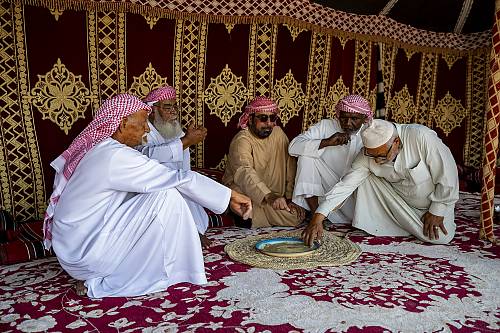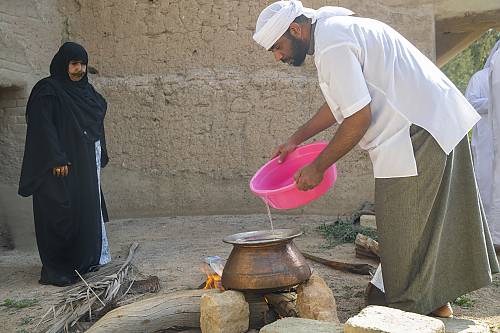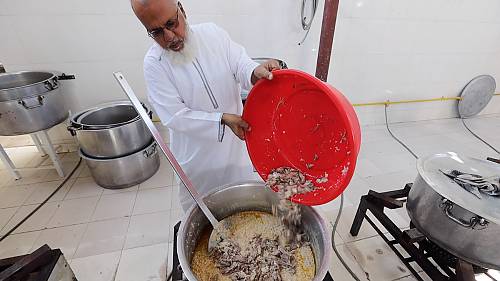Harees dish: know-how, skills and practices
United Arab Emirates Oman Saudi Arabia
Inscribed in 2023 (18.COM) on the Representative List of the Intangible Cultural Heritage of Humanity

Harees is a popular traditional dish made with wheat grain, meat and ghee. Typically consumed at breakfast and dinner, the dish is usually made in big quantities because of the effort required to clean and grind the grain. It is served in large dishes that are shared by several people, and eaten using the thumb and forefinger while sitting on one knee. Although harees is prepared for many occasions, it is particularly popular during Ramadan, when honouring guests, and for social events such as weddings. It is also popular during the pilgrimage season because of the simplicity of its ingredients and the ability to make and serve it in large quantities. In the United Arab Emirates, Oman and Saudi Arabia, Harees is present in many social and cultural elements such as folk stories, sayings and poetry. The related skills and knowledge are passed on from mothers to daughters, in educational institutes, restaurants and hotels, and through the media and official institutions. Preparing and serving harees is viewed as a sign of hospitality and generosity. A means of promoting social connection, the practice strengthens bonds between people and communities while enhancing cultural affinity in the societies concerned.









